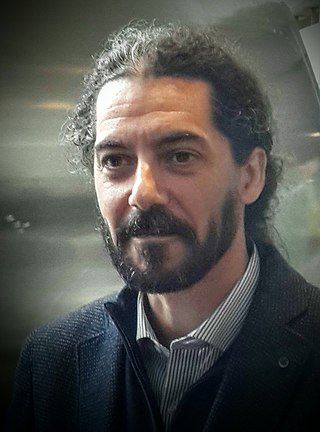Top Qs
Timeline
Chat
Perspective
Alfonso Nieto-Castanon
Spanish computational neuroscientist From Wikipedia, the free encyclopedia
Remove ads
Alfonso Nieto-Castanon (born September 1972) is a Spanish computational neuroscientist and developer of computational neuroimaging analysis methods and tools. He is a visiting researcher at the Boston University College of Health and Rehabilitation Sciences,[1] and research affiliate at MIT McGovern Institute for Brain Research.[2] His research focuses on the understanding and characterization of human brain dynamics underlying mental function.
Remove ads
Early life and education
Nieto-Castanon was born in Spain in 1972.[3] He was part of the first Spanish team to participate in the International Physics Olympiad in 1990[citation needed]. He went to college at the Universidad de Valladolid from 1991 to 1995 and earned a B.S./M.S. in Telecommunications Engineering. In 1998 he pursued graduate studies in Boston University Cognitive and Neural Systems Department and was awarded a research training fellowship from Fundación Séneca/Cedetel, and a graduate research fellowship from Boston University. He received a Ph.D. in Computational Neuroscience in 2004.[4]
Remove ads
Contributions to science
Summarize
Perspective
ROI analyses
In some of his early work Nieto-Castanon helped develop novel methods for region of interest (ROI) analyses of fMRI data,[5] with a focus on multivariate techniques and the use of subject-specific ROIs, where regions of interest are defined differently for each person based on common anatomical or functional landmarks.[6][7] Subject-specific ROIs allowed researchers to probe the limits of the functional localization hypotheses common in neuroimaging, and better understand the spatial and functional specificity of different brain areas.[8]
Brain-computer interfaces
In collaboration with Boston University's Neural Prosthesis Laboratory, Nieto-Castanon helped build a Neuroprosthetic device for real-time speech synthesis.[9] This system was designed to allow patients with locked-in syndrome to produce speech by decoding signals from a neurotrophic electrode implanted in the brain.[10][11]
Functional connectivity
Nieto-Castanon also developed multiple influential mathematical and computational techniques for functional connectivity analyses,[12] with a special emphasis on the robust estimation of functional connectivity measures in the presence of subject-motion and physiological noise sources.[13] In 2011 he developed CONN to integrate and facilitate best practices in functional connectivity studies.[14] CONN included a combination of novel methods such as multivariate connectivity analyses and dynamic connectivity estimation, together with multiple well known techniques such as psycho-physiological interactions, graph analyses, or independent component analyses. His software has been since widely adopted in the field[15][16][17][18][19] and it is now regularly used in functional connectivity studies, with over 900 citations during 2021 alone[20]
Nieto-Castanon has given numerous courses and lectures worldwide[21][22][23][24][25] and his work has been cited in over 8000 refereed journal articles to date.[26]
Remove ads
International competitions
Beyond his research, Nieto-Castanon is also recognized for his participation in international programming and data-analysis competitions. Programming in Matlab, Nieto-Castanon won in 2009 and in 2011 the Color Bridge and Vines MathWorks collaborative-programming competitions.[27][28] He was also the winner in 2011 of the Microsoft Kinect video gesture identification competition,[29][30] obtained second place at the Marinexplore and Cornell University Whale Detection audio classification challenge,[31] took first prize in 2013 Genentech's Flu Forecasting predictive model competition,[32] and placed second in MathWorks 2014 bin packing optimization competition.[33] In 2013 Nieto-Castanon was ranked as the third best data-scientist in Kaggle,[34][35] and he has been ranked as the best Matlab programmer in MathWorks Cody games for seven consecutive years between 2013 and 2019.[36]
References
External links
Wikiwand - on
Seamless Wikipedia browsing. On steroids.
Remove ads

